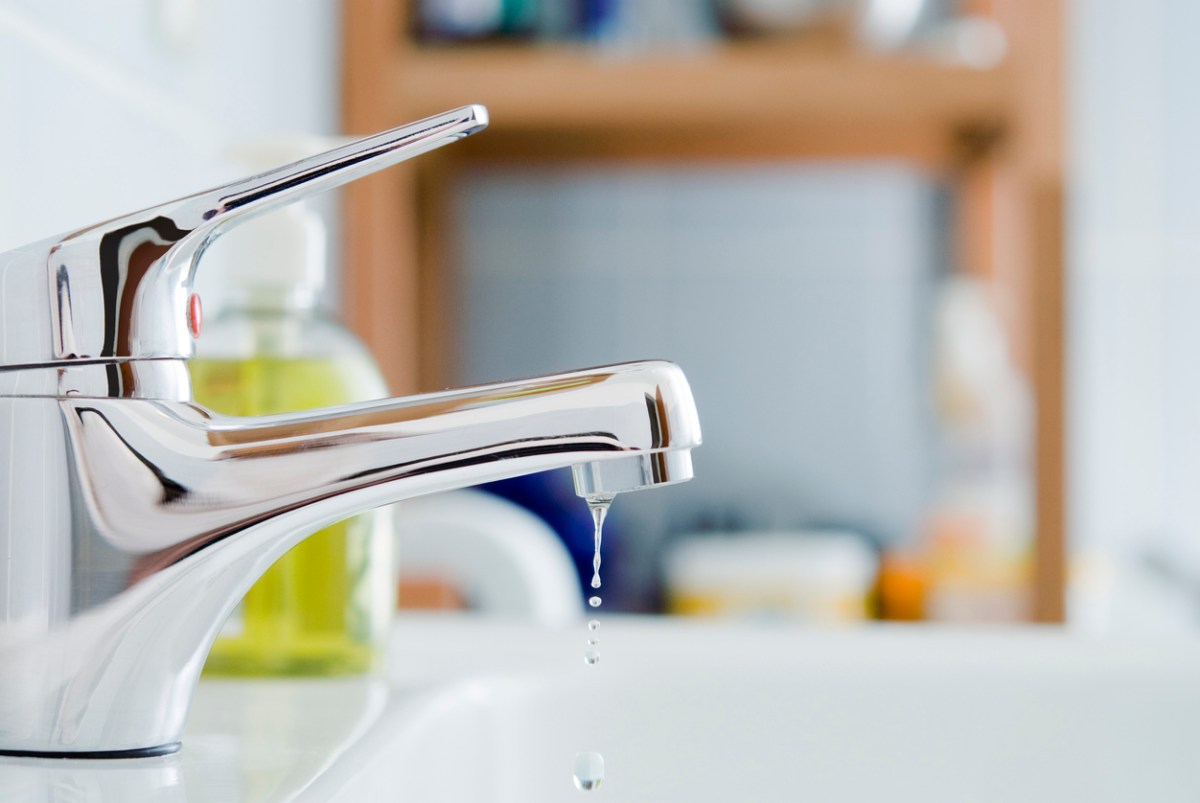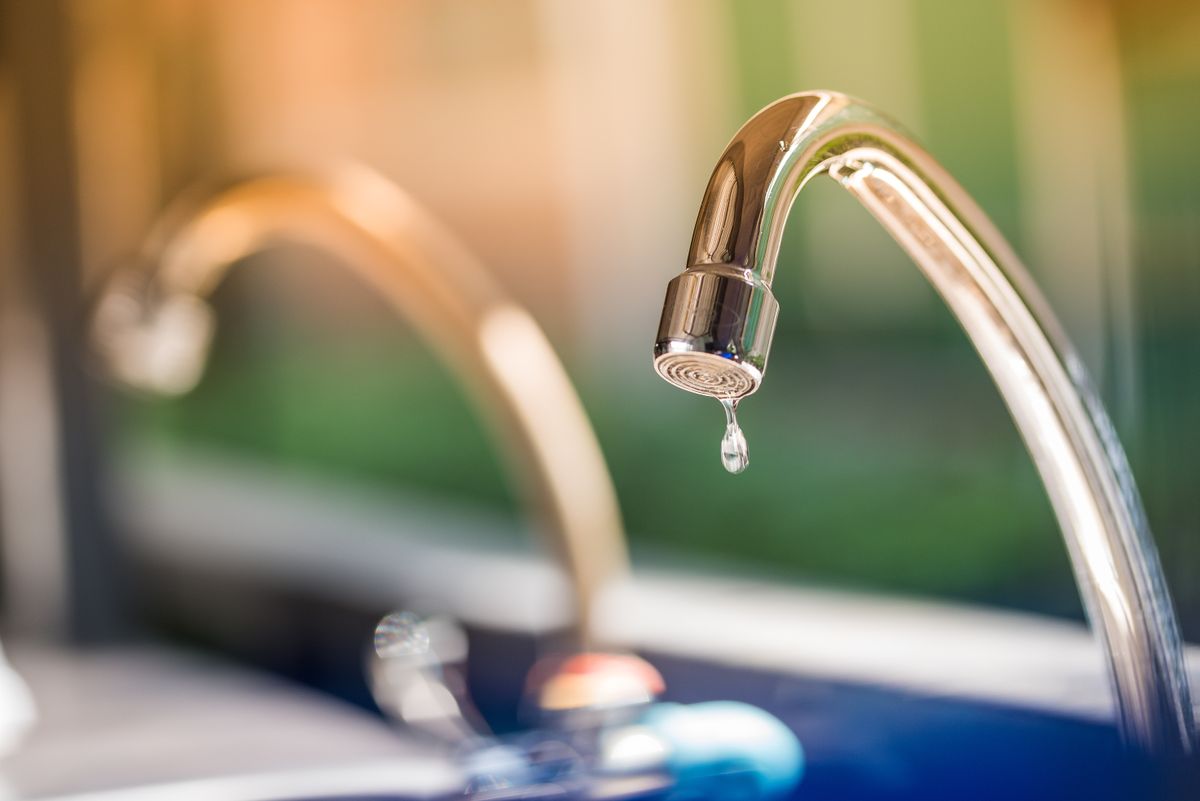My Significance of Addressing a Dripping Faucet
My Significance of Addressing a Dripping Faucet
Blog Article
We have unearthed this great article about Why It's Important to Fix Leaky Faucets down the page on the internet and think it made sense to discuss it with you on this site.

Trickling taps could appear like a minor trouble, yet their impact exceeds simply the inconvenience of the noise. From drainage to sustaining unnecessary economic prices and health risks, disregarding a leaking tap can bring about various consequences. In this short article, we'll explore why it's vital to resolve this usual household issue promptly and efficiently.
Wastage of Water
Environmental Impact
Trickling taps add substantially to water waste. According to the Environmental Protection Agency (EPA), a single tap trickling at one drip per second can waste greater than 3,000 gallons of water annually. This not only strains water sources however also influences ecological communities and wildlife dependent on them.
Financial Prices
Enhanced Water Bills
Past the environmental impact, leaking faucets can pump up water bills considerably. The accumulated waste in time converts into greater energy expenses, which can have been prevented with prompt repair services.
Potential Building Damage
Additionally, extended leaking can result in harm to fixtures and surface areas bordering the tap. Water buildup can trigger discoloration, rust, and also structural concerns if left ignored, leading to additional repair work costs.
Wellness Issues
Mold and Mold Growth
The constant visibility of dampness from a dripping faucet produces an optimal setting for mold and mildew and mildew development. These fungi not just compromise indoor air top quality yet also position health threats, specifically for people with breathing problems or allergic reactions.
Waterborne Illness
Stationary water in dripping taps can end up being a breeding place for bacteria and various other pathogens, boosting the threat of waterborne conditions. Pollutants such as Legionella germs thrive in stagnant water, possibly bring about major illnesses when ingested or inhaled.
Do it yourself vs. Professional Repair service
Benefits and drawbacks of DIY Repair
While some may try to repair a trickling faucet themselves, DIY repair work include their own set of obstacles. Without correct knowledge and devices, do it yourself efforts can exacerbate the issue or result in incomplete repair services, lengthening the trouble.
Advantages of Working With a Specialist Plumber
Working with a specialist plumber makes certain that the underlying source of the dripping faucet is addressed effectively. Plumbings possess the knowledge and equipment to diagnose and fix faucet issues efficiently, saving time and minimizing the danger of additional damage.
Step-by-Step Overview to Repairing a Dripping Tap
Tools Needed
Before trying to take care of a dripping tap, gather the essential tools, consisting of an adjustable wrench, screwdrivers, substitute parts (such as washing machines or cartridges), and plumber's tape.
Common Tap Issues and Their Solutions
Identify the kind of tap and the particular concern causing the drip. Typical troubles include worn-out washers, corroded shutoff seats, or faulty O-rings. Refer to maker guidelines or online tutorials for step-by-step support on fixings.
Preventive Measures
Regular Maintenance Tips
To avoid trickling taps, execute routine maintenance such as cleaning up aerators, checking for leakages, and changing damaged components immediately. Furthermore, take into consideration mounting water-saving gadgets or upgrading to much more effective fixtures.
Importance of Prompt Repair Works
Attending to leaking faucets as quickly as they're seen stops additional water wastage and possible damages, eventually saving both water and cash over time.
Impact on Home Value
Perception of Well-Maintained Building
Preserving a residential property in good condition, including resolving maintenance concerns like dripping taps, boosts its viewed worth and desirability amongst possible buyers or occupants.
Impact on Resale Value
Features with well-maintained plumbing components, consisting of taps, command higher resale values in the realty market. Resolving dripping faucets can contribute to a favorable perception throughout property examinations and arrangements.
Ecological Duty
Individual Payment to Preservation
Taking duty for fixing dripping taps straightens with more comprehensive initiatives towards water conservation and environmental sustainability. Every individual's actions jointly make a considerable impact on protecting priceless resources.
Lasting Living Practices
By focusing on punctual fixings and embracing water-saving habits, individuals add to sustainable living techniques that benefit both existing and future generations.
Final thought
Resolving a trickling faucet exceeds mere comfort; it's an important action toward preserving water, decreasing monetary prices, and safeguarding health and wellness and property. Whether with DIY fixings or specialist assistance, acting to repair leaking faucets is a little yet impactful method to promote responsible stewardship of resources and contribute to a much healthier, extra lasting future.
How to Fix a Dripping or Leaky Faucet
A leaking faucet is one of the most common problems that homeowners encounter, but it being commonplace doesn’t make it any less annoying. The constant drip drip drip of a leaking bathtub faucet, showerhead, or sink tap can disturb your home’s serenity. Left neglected, a dripping faucet can also result in higher water bills and discoloration or mold growth in your sink or plumbing fixtures.
Fortunately, you don’t have to be a trained plumber to know how to stop a dripping faucet. With some basic tools, replacement parts, and a little patience, leaky faucet repair is a breeze. In this article, we’ll explain what causes dripping faucets and how you can fix them.
What Causes a Leaking Faucet?
Kitchen and bathroom faucets come in all manner of designs, but most involve some combination of valves, O-rings, seals, and washers. The O-ring is usually the weakest link, but any one of these pieces can wear down over time. Heat, moisture, temperature fluctuations, minerals, mold, and movement can contribute to warping and corrosion, breaking the watertight seal. This just comes with the territory of being a homeowner. Everything is always subject to wear and tear, and some component parts of your appliances and fixtures need to be replaced on occasion. At least replacement O-rings are cheap!
More rarely, dripping faucets can be a symptom of excessively high water pressure. Were this the case in your home, you would probably notice that the leak is not isolated to one faucet. Water pressure issues are harder to resolve on your own. We recommend contacting a professional plumber if you suspect your water pressure is too high.
How to Fix a Dripping Faucet
Pipe wrench or monkey wrench Allen wrench set Screwdrivers Old towel or rag Shut off the water.
Before you do anything, you need to turn off the water to keep from drenching your kitchen or bathroom. You should find a valve under the sink and against the wall. Once you’ve turned this valve, try turning the faucet on to confirm that the water source has been cut off.
If you can’t locate your local valve for the faucet you’re working on, you can always shut off the water to the house at the main valve. Of course, this will prohibit anyone from using the sinks, showers, or toilets while you’re working on the faucet that’s giving you trouble.
Plug or block the drain.
You’ll be disassembling the faucet and removing some small bits of hardware. Plug the drain with a stopper or rag to avoid the possibility of a small screw falling into your P-trap.
Take apart the faucet assembly.
There are several varieties of kitchen and bathroom faucets, each with its own manner of assembly. For detailed instructions on how to disassemble your faucet, you can refer to the fixture’s manual or contact the manufacturer. If you know whether you have a ball, disc, cartridge, or compression faucet, you can find detailed schematics online.
In general, you need to begin by removing the faucet handles. You might notice a small screw that you’ll need to remove with a screwdriver or Allen wrench. If you don’t see any visible securing hardware, it’s likely hidden under a decorative cap that can be unscrewed or popped off with flathead screwdriver.
Remove each piece methodically, consulting a schematic when necessary. Take notes or arrange the pieces in such a way to make it easier to correctly reassemble the faucet later.
Remove the cartridge.
Once you’ve removed the handles and securing hardware, you should be able to remove the valve cartridge or stem. Some cartridges will slide right out. Other faucet models will require you to loosen a nut with a pipe wrench before you can remove the valve stem.
Examine the exposed hardware.
With the cartridge or stem removed, inspect the component parts. Check the rubber O-rings for wear and tear. Also examine the seat washer for corrosion or other damage. These pieces are usually the responsible parties for a dripping faucet, but it’s worth inspecting the other component parts while you have the faucet disassembled.
Find replacement parts.
Once you’ve identified which faucet component has failed, find an identical replacement. Your local hardware store should have O-rings, seat washers, and other standard components in stock. If you have a luxury or uncommon faucet, you may have to contact the manufacturer for a replacement part.
It’s a good idea to take your old parts with you to the hardware store so you can compare them with the store’s inventory and be sure you’re purchasing the correct replacement.
Reassemble the faucet.
With your new parts in hand, reconstruct the faucet and handles. Don’t be tempted to overtighten screws or nuts. You might think this could create a better seal, but it can instead damage or bend a delicate part of the assembly and create a new problem for you.
Turn on the water and test the faucet.
The only thing left to do is test your work. Unplug the sink, turn the water back on, and try the faucet. Congratulate yourself on a job well done!
https://www.libertyhomeguard.com/how-to-fix-a-dripping-or-leaky-faucet/

We were brought to that report about Water Dripping from Faucet: Why and How to Fix from a good friend on a different web page. Sharing is good. You won't know, you could be doing someone a favor. We treasure your readership.
Report this page